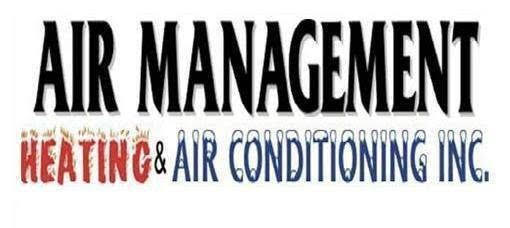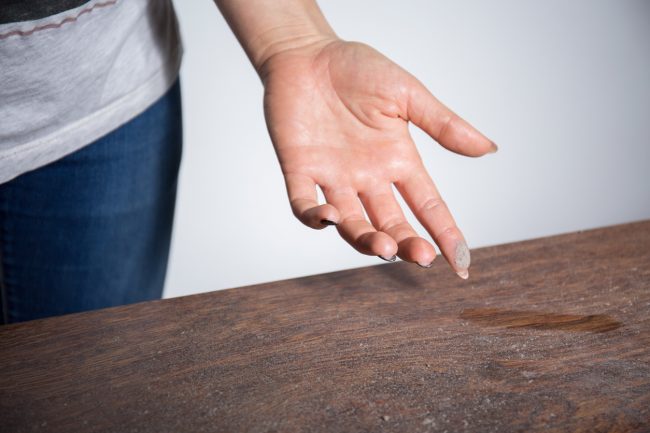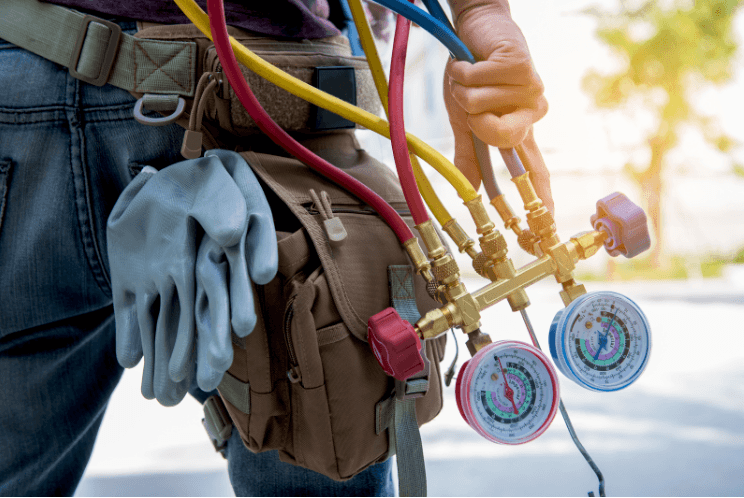Your home is filled with endless chores: dishes, laundry, vacuuming and the dreaded task of dusting. While these duties are unavoidable, some of them may feel like they have to be done too often. If you’re struggling to keep up with a dusty home, it could be that your HVAC system is part of the problem. Fortunately, for every common HVAC problem that may contribute to excessive dust, there is a simple and effective solution.
Set a Trap for Dust
When you’re checking your HVAC system for clues to the source of your dusty home, the filter is the place to start. HVAC filters should be inspected at least as often as once per month and replaced or cleaned whenever they’re dirty. If you have an especially dusty home or shedding pets, it may be worthwhile to replace the filter more often.
All the dust you see in your used filter is dust that is taken out of circulation in your home. But when the filter becomes clogged, your system can’t efficiently clean dust from the air, so more of it stays in your living space. Not all filters are created equal, and you might find more success from filters with a higher MERV rating. Upgrading to these filters is a bit of a trade-off; the filters may last longer and will capture small particles that other filters won’t, but they’re more expensive and will cost you a bit in energy efficiency.
When changing your filter, you should also check to ensure that there’s a tight seal around all sides as it fits in the air return. If there are gaps or if your filter is improperly sized, dust will be able to flow freely through your system and throughout your home.
Plug the Leaks
Leaky ductwork is a somewhat more challenging problem that can cause excessive dust, and unfortunately, it’s very common. Small gaps can develop in your ductwork due to age, damage or poor workmanship, and they can develop in some very dusty areas of your attic and basement. These gaps allow dust to flow in at a point past your filter, and that dust goes right out your vents and into your rooms.
Take a close look at a few of your vents. If you see dust buildup on the fins or around the vents, you may have leaky ductwork. Depending on the layout of your home and HVAC system, you may be able to safely inspect a good portion of your ductwork. If you turn out all the lights and inspect your ductwork with a flashlight, you can more easily see the flow of dust particles in the air, which can guide you to the source of a leak. Many small leaks can be effectively repaired with duct tape if you can reach them.
For more thorough inspections and repairs, consider enlisting the help of a licensed HVAC technician. They can detect and patch leaks in places you may not be able to reach, and those tend to be some of the dustiest parts of your duct system.
Don’t Dry Out
Homeowners in wetter climates tend to get a bit of a break from these dusty house problems, whereas those in more arid climates experience the opposite. Dust flows freely through dry air, and will, therefore, travel much farther through an HVAC system. When the air is more humid, dust settles faster and has more opportunities to get trapped in your filters.
Dust is not only a bigger problem in drier climates, but it’s also a bigger problem during the dry winter months than in the wetter summer. And if you have leaky ducts pulling in dry, untreated winter air from your attic, you might be creating an especially dust-friendly environment in your home.
Besides getting your ductwork sealed, the best weapon against overly dry air is to use a high-quality humidifier in your home. If you live in a very dry area, it may be worth considering a whole-home humidifier, which can also help protect wooden furniture and trim from becoming brittle.
Dust Smart
These solutions may help you reduce the amount of dust in your home, but they won’t get you out of dust duty completely. So the next time you tackle this chore, try this trick: adjust your thermostat’s fan setting to “On”. If your filter is clean, it will trap a lot of the dust you kick up. Just remember to set it back to “Auto” when you’re finished.
Be on the lookout for leaky ductwork, and if you need professional service, contact one of the professionals at Air Management today!
Contact an Air Management HVAC Professional today!
Air Management guarantees to bring you and your family quality installation and courteous, friendly service that will exceed all of your needs. Call Air Management at 732-819-0008 today!







